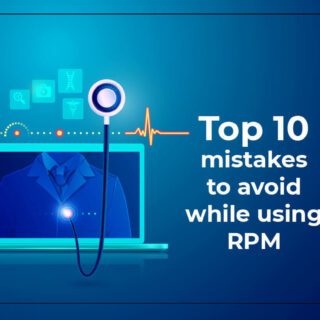

The number of people suffering from hypertension is on the rise. Of that enormous number, only a tiny fraction has their condition under control. Fortunately, remote patient monitoring devices can change this situation. They are vital given the serious consequences of hypertension getting out of control. Hypertension can easily cause serious diseases, including stroke and heart disease. Remote patient monitoring software can help save hypertension patients from these possibilities.
A few years ago, remote patient monitoring would have sounded strange to many people. However, that’s not the case anymore following the COVID-19 pandemic. It changed many sectors, particularly healthcare. Remote patient monitoring became the new norm due to the limited contact the pandemic demanded to avoid COVID transmission. As we continue to move away from the pandemic, the procedural trends continue because they have proven to have significant benefits.
Remote patient monitoring helps physicians track patients’ status without having to meet physically. This method has consistently managed conditions, measured techniques, and monitored behavioral changes. It achieves this through various remote patient monitoring devices. They include weight scales, pulse oximeters, glucose monitors, ventricular assist devices (VADs), activity trackers, continuous positive airway pressure (CPAP) appliances, temperature, heart rate, and blood pressure monitors, and more.
These devices generate important data that help doctors better understand their patients. They use the information to monitor patients’ conditions and responses to particular medications. Since data is collected from various patients, it is also possible to use the information to improve the health sector on the whole. Those are just a few benefits of using these remote patient monitoring devices.
Remote patient monitoring software’s impact on helping with people’s hypertension is indisputable. An RPM can help someone with hypertension in several ways. However, before looking into how RPM can help the patients, let’s understand why occasional physical appointments with the doctor aren’t suitable for them.
When one has hypertension, the blood pressure keeps fluctuating. So, you can imagine a patient whose blood pressure was high back home, but when the doctor measures it during the checkup, the reading is average. The patient will go home happy, yet he will be walking with a ticking bomb.
Sometimes, the issue is the measuring techniques. If they are adequate, accurate, and consistent, decisions based on the data can save lives. Patients rely on their doctors’ input but might only give their condition the attention it needs on days that they see their doctor. This is dangerous as hypertension requires more consistent care and attention. Since the monitoring isn’t consistent, the doctor may not know precisely when the blood pressure rose. Unfortunately, any delay poses a danger. This medication must start as soon as possible to avoid complications if the condition isn’t controlled. The doctors may also need to identify when the medication needs to be increased or reduced.
This is where remote patient monitoring devices come in. Hypertension patients can benefit from them in the following ways;
You can’t manage something you don’t know exists. Unfortunately, people rarely visit their doctor unless they are feeling unwell. So, they will most likely visit the doctor after seeing more extreme outcomes of hypertension. That can change with remote patient monitoring devices. Using a RPM, patients’ health can be monitored more consistently, making changes in their condition more readily available to their doctors so that appropriate action can be taken in a timely manner.
High blood pressure readings don’t always mean hypertension. Readings could be based on instances of higher stress or anxiety. Even during doctor’s office visits, people can see their blood pressure readings spike because of anxiety. These factors can lead to false diagnoses of hypertension. Using a RPM, consistent, day-to-day measurement can give a more accurate picture of your heart’s health in more routine aspects of a patient’s life. Errors and outliers can be more easily spotted in contrast to the data gathered daily.
With RPM devices, gone are the days when patients would be surprised by an escalated high blood pressure reading. Consistent measurements ensure that one knows when it increases or decreases. If their doctor has told them what to do when spikes or drops in blood pressure occur, then patients can act accordingly. Handling changes in time can reduce the risks of severe hypertension risks.
Doctors often prescribe medication to control hypertension. A doctor can know whether the medication is working thanks to the consistently recorded pressure readings from a RPM. If the treatment isn’t working, the physician can change it in a more timely manner. Patients can also use patient monitoring software to manage their dosages. Their system can notify them when it is time for them to take their medications. These reminders can prevent missing medication, improving the effectiveness of one’s treatment.
Remote patient monitoring devices can benefit a patient with hypertension. Their condition needs consistent monitoring because blood pressure levels can increase or decrease drastically. Patients must act immediately to avoid more serious complications when changes occur.
A RPM can also save time and money you might otherwise spend visiting the doctor in-person. The accuracy of these remote patient monitoring devices ensures that the results are up-to-date and helpful. Tracking progress is easy since the devices keep records of all blood pressure readings and more. Monitoring medication and treatments is also a breeze, which is very important when dealing with hypertension.
Become a Partner
Support
Portals
For additional support: call +1 (877) 581-8810.